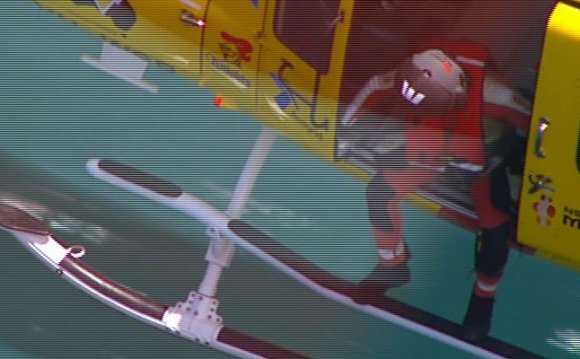
On the eve of this year’s NAB Show in Las Vegas, the FCC has been asked to approve the next generation of TV transmission – ATSC 3.0. A broad coalition – broadcasters through the NAB and APTS (the public television association), technology manufacturers (through CTA – the Consumer Technology Association formerly the Consumer Electronics Association), emergency communications advocates (through the AWARN Alliance, which includes broadcasters) and ATSC (the TV technology standards association) have requested that the Commission approve this new technology for use by TV stations on a voluntary basis. The petition (available here) asks that the FCC approval be granted expeditiously, no doubt so that roll-out could be timed with the repacking of the TV band that will be required following the broadcast incentive auction that is now underway.
The requested changes to the FCC rules are minimal – asking only that TV stations be able to adopt and use the new transmission standard, that stations using the standard be treated as TV stations for must-carry purposes (and providing for prior notice to MVPDs when the conversion is about to occur on a TV station), and to provide for TV stations who decide to convert to be able to continue to broadcast in the current DTV standard. That continuation of service would be provided by allowing a station that converts to the new standard to simulcast one program stream on another TV station that is operating using the current DTV standard in the same market, as existing TV sets will not be able to decode the new transmission standard. Here are some questions that we had when reading the Petition and answers to the extent that we can discern them from the filings made so far.
What is being proposed right now? In the petition, the FCC is being asked to approve only what is called the “physical layer” of the system, i.e. the transmission system that allows content to be transmitted by the TV station. The FCC is not being asked to approve other aspects of ATSC 3.0, including the “look and feel” aspects of the new standard, such as audio capabilities and visual appearance. Some of those aspects are still being considered by ATSC and may not be finalized until later this year.
Will the system require new channels for broadcast operation? No. According to the petition, the signal will fit within the 6 MHz channel that each broadcast station is already allotted, and won’t change the interference “envelope” – meaning that it won’t interfere with other TV stations any more than does a station using the current DTV system.
What capabilities does this new system offer that are not offered through the current transmission system? The new system will allow for ultra-high definition TV, and perhaps, in the future, virtual reality programming. It will allow interactive programming, and programming that can connect with other communications channels, including those available online. Multiple channels of sound, different programming streams to different geographic parts of the station’s service area, and enhanced emergency alerts are all promised in the petition. Enhanced capabilities to transmit data streams is also set out in the petition.
How can the system offer all of these services? The petition says that the new ATSC 3.0 system will transmit using IP technology, like the Internet, and provide significantly more capacity to transmit the digital information necessary to offer all of these services to the public than the current system.
Will I be able to receive all these services over-the-air on my current TV? No, the system is not “backwards compatible” – meaning that the TV sets currently in use will not be able translate the broadcast data into a usable format.
Does that mean that I will not be able to see my favorite programs if the station on which they are shown converts to the new ATSC 3.0 system? The petition says that in most cases you will be able to see at least the main video channel on a TV set using the current standard, as the proposal would require ATSC 3.0 stations to make deals to simulcast their programming on other stations in their markets that have not transitioned to the new system. This will allow viewers who do not yet have new TVs to watch their favorite programs on their existing sets.








